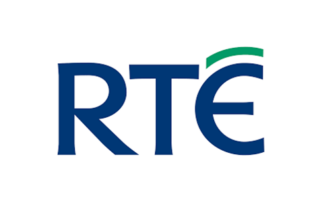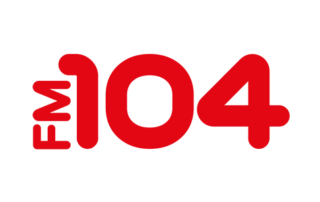
Solar PV vs Solar Thermal
There are two main types of solar power systems which you can install on your property, solar photovoltaic (PV) panels, or solar thermal collectors.
These provide different types of energy for your home, come at different costs, and will net you different savings over time. So which then is the best option for someone looking at getting a solar system installed today.
Well, let’s start by looking at what the two different types of technology are for.

Solar PV Panels
Solar Photovoltaic Panels convert sunlight into electricity. The panels are made up of photovoltaic cells of a material, usually crystal, which converts photons into electricity through the photovoltaic effect.
The electric current generated by solar panels is in the form of direct current (DC), which has to be converted into alternating current (AC) before it can be used in your home. This is done by an Inverter, either at the end of the string of panels wired together, or via microinverters attached to each individual panel.
Elements in a solar PV system can include:
Solar Thermal Collectors
Solar thermal collectors trap heat from sunlight, and then channel that heat to a hot water cylinder. This is in contrast with burning fossil fuels such as oil or gas to heat a boiler.
The solar collectors absorb sunlight, which is then used to heat water or a heat transfer fluid, and bring that down to your hot water cylinder for it to be used.
There are two main types of technology used for solar thermal systems: Flat Plate Collectors and Evacuated Tube Collectors.

Flat Plate Collectors
Panels of black metal encased in a frame, and with a plastic of glass cover over them, and surrounded by insulation to reduce heat loss.
Either water or a heat transfer fluid is circulated through pipes underneath the metal plate and down to the hot water tank.
Evacuated Tube Collectors
Evacuated tube solar panels consist of glass tubes which have had the air evacuated from them to minimise the loss of heat. Inside of this is a metal pipe with an aluminium fin known as the absorber, which absorbs and transfers the heat into the fluid contained within the inner pipe.
The heat transfer fluid is then circulated to your hot water storage tank, where it heats the water via a coil.
Of these two types, Evacuated Tube Collectors are about 30% more efficient, so they take up less space on your roof. They are also considerably lighter than Flat Plate Collectors.
Which Should I Get
There are a multitude of pros and cons for the two different systems to weigh up when making your choice between solar PV and solar thermal.
Grant Support for Solar Systems
There are grant supports available to help manage the cost of both solar PV panels and solar thermal collectors. However, the number of grant sources and amounts available vary greatly between the two technologies.
The SEAI is the primary provider of grant funding for renewable energy technologies, and has grants available for both solar PV and solar thermal systems.
With solar thermal, the only grant amount available is €1,200, this can be a considerable chunk of the cost, but is still lower and less flexible than solar PV grants.
Critically, In order to qualify for the grant the solar thermal system must deliver a certain threshold of renewable energy per square metre of floor space in your home. Therefore, if you have a larger home, or get less sunlight, more solar thermal panels will be needed in order to receive the grant, diminishing its value.
The SEAI grants for homeowners to install solar PV panels maxes out at €2,100, but also has flexibility in that it scales with the size of the solar system you are installing.
For businesses, the Non-Domestic Microgen Grant Scheme has been supercharged this year to offer up to €162,600 in funding for businesses to install solar PV systems up to 1MWp in size.
Both solar PV and solar thermal can avail of the Accelerated Capital Allowance tax relief scheme. But there are other grants such as the Solar Capital Investment Scheme for farmers, for which only solar PV qualifies.

So Which to Choose
Having any solar system installed on your home or business is a significant long term investment, and with the long view in mind, solar PV is simply a better choice in terms of its versatility, and the degree to which it can save you money.

Author:

Briain Kelly
EDITOR
Briain Kelly is a Leinster based journalist and content creator who has been writing about energy efficiency and renewable energy technologies for nearly three years. He researches the latest news in multiple areas related to solar power, electric vehicles, heat pumps, and home energy upgrades. His writing includes both technological developments and government policy.
Author:

Briain Kelly
Renewable Energy Researcher
Briain Kelly is a Leinster based journalist and content creator who has been writing about energy efficiency and renewable energy technologies for nearly three years. He researches the latest news in multiple areas related to solar power, electric vehicles, heat pumps, and home energy upgrades. His writing includes both technological developments and government policy.
Popular Content 🔥
Solar PV vs Solar Thermal
Written by
Last edited
13/07/2025
There are two main types of solar power systems which you can install on your property, solar photovoltaic (PV) panels, or solar thermal collectors.
These provide different types of energy for your home, come at different costs, and will net you different savings over time. So which then is the best option for someone looking at getting a solar system installed today.
Well, let’s start by looking at what the two different types of technology are for.

Solar PV Panels
Solar Photovoltaic Panels convert sunlight into electricity. The panels are made up of photovoltaic cells of a material, usually crystal, which converts photons into electricity through the photovoltaic effect.
The electric current generated by solar panels is in the form of direct current (DC), which has to be converted into alternating current (AC) before it can be used in your home. This is done by an Inverter, either at the end of the string of panels wired together, or via microinverters attached to each individual panel.
Elements in a solar PV system can include:
Solar Thermal Collectors
Solar thermal collectors trap heat from sunlight, and then channel that heat to a hot water cylinder. This is in contrast with burning fossil fuels such as oil or gas to heat a boiler.
The solar collectors absorb sunlight, which is then used to heat water or a heat transfer fluid, and bring that down to your hot water cylinder for it to be used.
There are two main types of technology used for solar thermal systems: Flat Plate Collectors and Evacuated Tube Collectors.

Flat Plate Collectors
Panels of black metal encased in a frame, and with a plastic of glass cover over them, and surrounded by insulation to reduce heat loss.
Either water or a heat transfer fluid is circulated through pipes underneath the metal plate and down to the hot water tank.
Evacuated Tube Collectors
Evacuated tube solar panels consist of glass tubes which have had the air evacuated from them to minimise the loss of heat. Inside of this is a metal pipe with an aluminium fin known as the absorber, which absorbs and transfers the heat into the fluid contained within the inner pipe.
The heat transfer fluid is then circulated to your hot water storage tank, where it heats the water via a coil.
Of these two types, Evacuated Tube Collectors are about 30% more efficient, so they take up less space on your roof. They are also considerably lighter than Flat Plate Collectors.
Which Should I Get
There are a multitude of pros and cons for the two different systems to weigh up when making your choice between solar PV and solar thermal.
Grant Support for Solar Systems
There are grant supports available to help manage the cost of both solar PV panels and solar thermal collectors. However, the number of grant sources and amounts available vary greatly between the two technologies.
The SEAI is the primary provider of grant funding for renewable energy technologies, and has grants available for both solar PV and solar thermal systems.
With solar thermal, the only grant amount available is €1,200, this can be a considerable chunk of the cost, but is still lower and less flexible than solar PV grants.
Critically, In order to qualify for the grant the solar thermal system must deliver a certain threshold of renewable energy per square metre of floor space in your home. Therefore, if you have a larger home, or get less sunlight, more solar thermal panels will be needed in order to receive the grant, diminishing its value.
The SEAI grants for homeowners to install solar PV panels maxes out at €2,100, but also has flexibility in that it scales with the size of the solar system you are installing.
For businesses, the Non-Domestic Microgen Grant Scheme has been supercharged this year to offer up to €162,600 in funding for businesses to install solar PV systems up to 1MWp in size.
Both solar PV and solar thermal can avail of the Accelerated Capital Allowance tax relief scheme. But there are other grants such as the Solar Capital Investment Scheme for farmers, for which only solar PV qualifies.

So Which to Choose
Having any solar system installed on your home or business is a significant long term investment, and with the long view in mind, solar PV is simply a better choice in terms of its versatility, and the degree to which it can save you money.

Author:

Briain Kelly
EDITOR
Briain Kelly is a Leinster based journalist and content creator who has been writing about energy efficiency and renewable energy technologies for nearly three years. He researches the latest news in multiple areas related to solar power, electric vehicles, heat pumps, and home energy upgrades. His writing includes both technological developments and government policy.
Author:

Briain Kelly
Renewable Energy Researcher
Briain Kelly is a Leinster based journalist and content creator who has been writing about energy efficiency and renewable energy technologies for nearly three years. He researches the latest news in multiple areas related to solar power, electric vehicles, heat pumps, and home energy upgrades. His writing includes both technological developments and government policy.

















